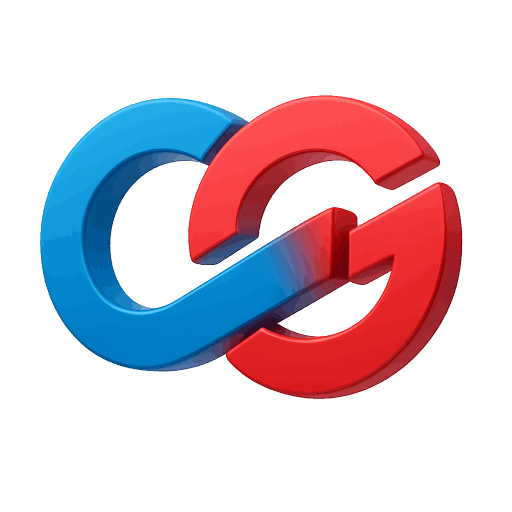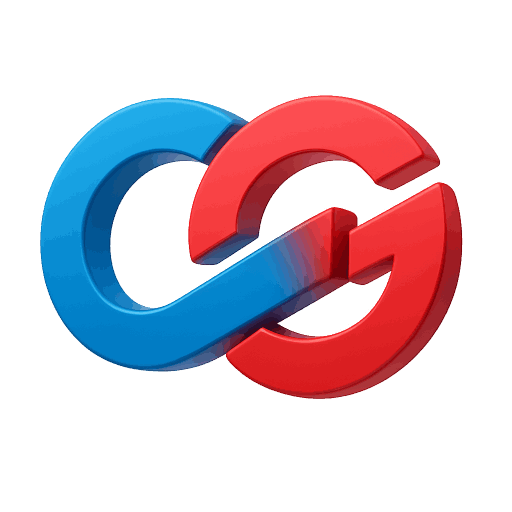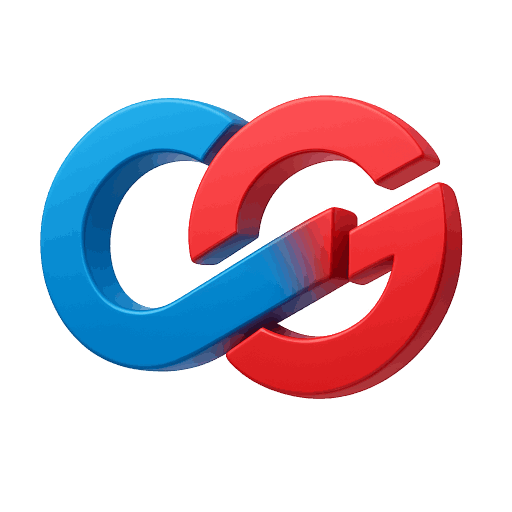
Interview with Lan Johnson, Senior Designer at Square
uxdesign.cc
Lan Johnson is a Senior Product Designer at Square. We met over 10 years ago in 2014 in Dallas, at Tekzenit where we both worked as user experience designers.Lan is a military brat and grew up in Japan and South Korea, and Guam. Lans father retired in Las Vegas and then they eventually moved toDallas.Lan currently lives in Seattle, Washington with her boyfriend and theirdog.You can find Lan on LinkedIn.What was your journey getting into product design?I actually started out thinking I wanted to be a graphic designer. I was really into anime as a kid, and when I got my hands on a (very outdated and pirated) copy of Photoshop 6 at around age 11, I was hooked. In high school, I also taught myself how to code, which opened the door to doing small freelance jobs here and there while I was still inschool.Eventually, I joined a startup in New York, before moving back to Dallas to finish my degree. From there, I spent about 10 years in consulting, working across different agencies and design shops. That period was fun and full of variety, but I found myself missing the feeling of being deeply connected to a singleproduct.In 2020, just a few weeks before the pandemic hit, I made the leap to go in-house. I stayed almost two years in that role, and now Im continuing my journey atSquare.For better or worse, how do you think your parents, family, or friends influenced how you approach problem solving in your day to day work?I had to learn how to problem-solve on my own from a young age, which made me very independent. My family moved around a lot, so I was constantly rebuilding my support system and adapting to new cultures. That experience shaped the way I work todayit taught me how to be flexible, resilient, and comfortable walking into unfamiliar environments.Those skills came in handy when I moved into consulting. I had no trouble starting conversations, building relationships quickly, and feeling at ease in different rooms. In high school, I went to a Department of Defense school in East Asia with only about a thousand students total from kindergarten through senior year. With so few people, it felt like being in a small startupyou had to be resourceful, self-sufficient, and figure things out because there werent always obvious answers. That mindset has carried through into my approach to design and problem-solving today.How would you describe your background at Capital One, Project202 and Tekzenit?Each place was really different and shaped me in unique ways. At Tekzenit, I was just starting out. It was in the telecom space, and honestly, I was still figuring out how to navigate the corporate world while learning an industry that didnt end up being directly relevant to me later. But it was an important firststep.At Project202, I had the chance to work across a wide range of industries and clients. For example, I worked with Southwest Airlines, learning how they assign pilots and cabin crew, which gave me insight into complex scheduling and logistics. I also helped JCPenney retrofit their site to be mobile and desktop friendly, back when responsive design was still a big shift. That variety really sharpened my ability to adapt quickly and problem-solve across different domains.Capital One was especially interesting because of how structured and unionized their systems were. They had this massive scheduling platform that auto-generated crew schedules, but it always had to be corrected by hand. Once a year or so, pilots and crew reps from the union would come in to review and debate the schedules, approving what worked and pushing back on what didnt. It gave me a fascinating look into how large-scale systems intersect with human needs and negotiations.How would you describe your current role and experience at Square?Stepping away from management, I joined Square as an individual contributor, and Im really happy with that shift. At my last four jobs I was in management, so it feels good to be back in the weeds, hands-on with the workagain.Previously, I worked on identity verification, so moving into printers recently has been a big jump, but a good one. I think what I missed most in management was the craft. In consulting especially, so much of the role was about selling the work and managing stakeholders, rather than actually building. I enjoyed mentoring and growing talent, but I often felt pulled away from the fun of shipping products with ateam.At Square, I feel like Ive come full circle. I get to contribute directly, push projects over the finish line, and rediscover the parts of design that made me love this work in the firstplace.What are the biggest challenges you are currently facing at work?Right now, my biggest challenge is onboarding into the world of printers. There are so many nuances I didnt anticipate, especially since I focus on food and beverage, where every kitchen has very specific needs for how things run. Navigating those requirements has been a steep but interesting learningcurve.Another challenge is balancing engineering costs, business priorities, and whats ultimately best for the end user. Like all teams, were constantly deciding whether to patch immediate issues or invest in longer-term fixes that will pay off later. Were making progress, but its definitely ajourney.What are some ways that you leverage AI in your workflow?AI is a big focus for us. Our CEO, Jack Dorsey, is very forward-looking when it comes to future technologies like Bitcoin and decentralized identity, so adopting AI has become a company-wide initiative. We use a tool called Goose that allows us to automate some tasks. It saves me from having to wait on a data team to pull stats I can access the information I need instantly, which is incredibly helpful.Personally, I also use ChatGPT for writing tasks since its just more efficient, and Ive been experimenting with v0 to prototype. That tool can be a little frustrating at times, but its also fun and pushes me to think about design workflows in newways.What are parts of your job where you find using AI unnecessary or inefficient?AI is mostly useful as a baseline. I dont rely on it heavily in my day-to-day design work, since it cant really handle more sophisticated tasks. Where I do find it helpful is when teammates who arent as design focused, like PMs, use it to get their ideas across. Even if the output isnt perfect, it gives us something concrete to reactto.Recently, I organized a V0 prototyping workshop where participants used AI to create solutions for the same problem. None of the prototypes were perfect, but I was able to pull useful pieces from each. So while AI isnt my main tool, it does provide a good startingpoint.What are the most important aspects of pitching your design work to stakeholders?For me, the most important part is setting the right context. Ive found that when I take the time to explain the problem, why it matters, and the broader landscape were working within, stakeholders are naturally more aligned with my design decisions. Jumping straight into the solution can leave gaps, but grounding the conversation in the why builds trust andclarity.I often include a few introductory slides or notes at the beginning of my Figma files for this reason. It gives everyone a shared foundation and makes the actual design discussion more productive.Where do you get your design inspiration from?I use Dribbble a lot, but lately Ive been really inspired by the resurgence of 90s aesthetics. I especially love 35mm film because it feels so raw and honest. Square has been leaning into that vibe too, with a stronger focus on photography and visual storytelling that highlights our sellers. Im excited to see our design move more in that direction.Whats one failure or misstep that taught you something invaluable?I learned a lot during my time at AT&T, which often felt like trial by fire. The work environment was chaotic, and I made the mistake of pushing myself too hard, working while sick, putting in extra hours, and sacrificing balance. In hindsight, none of that effort really mattered, because it wasnt appreciated and didnt change the outcome. That experience taught me the importance of work-life balance and setting boundaries.I also got my first crash course in corporate politics. I had to learn how to navigate different personalities, especially difficult ones. For example, there was a teammate who constantly needed to feel important, and if you didnt give him that, he could make things unnecessarily difficult. I eventually figured out how to work through a proxy to get what I needed. As frustrating as it was, it taught me how to manage around egos and still get work done, something I carry with metoday.When you start on a new design team, where do you spend your time and energy?When I join a new team, the first thing I do is dig through all the files I can get my hands on: org charts, Figma files, documentation, anything available. That exploration helps me form better questions and makes my one-on-ones more productive.I also schedule 1:1s with my core team, partners, and anyone Ill be working closely with. A lot of those conversations are informal, just getting to know each other on a personal level, which I find really valuable. But when it comes to PMs or engineering leads, Ill bring specific questions based on what Ive already uncovered. That way, instead of a vague chat, I walk away with concrete answers or more resources to diveinto.Do you work on any side projects outside of work?Lately, Ive been struggling to enjoy my hobbies the way I used to, but Ive been trying to make space for them again. Drawing has always been a big part of my creative life; its actually what led me into design in the first place. Im especially drawn to food illustration, and Ive been experimenting with watercolors, alcohol markers, and colored pencils to get back intoit.Ive also been getting into photography. I recently picked up a film camera and Im looking forward to bringing it with me on upcoming trips to New York and San Francisco. For me, these side projects are less about output and more about reconnecting with the creative activities that inspire me outside ofwork.What are the most important qualities you look for in a design leader?Humility is the big one. Of course, a good leader should know their craft and be able to guide a team, but at this level those qualities are often a given. What really stands out to me is whether they can say no and whether they can admit when theyre wrong. If a leader can do those two things, chances are theyre strong in the other areas that mattertoo.How do you balance business goals with design integrity when theyre at odds?I think about it the same way I think about relationships. Compromise alone doesnt really solve anything. If one side simply gives in, it often leads to resentment. Instead, I try to collaborate closely with the team to understand the trade-offs and find a solution that works for everyone. There are usually many ways to slice an experience: some features can be a fast follow, or we can plan milestones that eventually reach the same outcome in a more balancedway.Of course, there are cases where trade-offs are unavoidable, like when legacy code ties everyones hands. In those situations, its about recognizing the limitation and planning for the larger migration effort that will ultimately make better solutions possible.What skills do you find relevant to product design that are not taught in school?One of the biggest lessons I had to learn early on was how to protect myself in the workplace. As a younger designer, I often felt taken advantage of, and no one had prepared me for that. I always encourage people to read up on employment laws and understand their rights. Ideally, youll also have a manager or senior teammate who can help you navigate those situations.Another important skill is knowing when not to overwork. In product design, were rarely saving lives, so putting in constant overtime doesnt necessarily create better results. In fact, protecting your peace and maintaining balance makes you a better creative, because good decisions and strong design work come from clarity and energy, notburnout.What are the most common aspects in designer portfolios that bother you?One thing Ive noticed is that many portfolios still lean on process checklists, showing every step of the design process without really explaining the thinking behind it. What Im really looking for is decision-making: why you chose a certain methodology, what you learned, where you failed, and the trade-offs you had to make along the way. Every project involves trade-offs, and understanding those is often more valuable than a polished checklist.Ill admit, writing case studies is tough, and I dont always enjoy it myself. One tip I picked up at Square is to keep a hype doc, a running log of your accomplishments, metrics you moved, and decisions you influenced. If you spend even an hour a month updating it, youll have a backlog of material that makes writing case studies so much easier later. I struggle to keep it up myself, but its an invaluable habit.Do you have any tips for designers trying to break into the product design world?When youre starting out, the biggest challenge is building work you can actually show in applications. My advice is to pick a problem you personally care about and design a solution end to end. Avoid random problem generators; when the problem is real to you, your work will feel more authentic. You can even use tools like V0 to prototype without needing engineering support, which makes it easier to bring your ideas tolife.Ive seen great examples of this. At Tekzenit, one intern designed an app to help their sister manage diabetes. It wasnt just a design exercise; it was personal and meaningful. Projects like that standout.Beyond the work itself, do your homework. Learn about your rights as an employee, research salary ranges so you can advocate for yourself, and come prepared to interviews. And dont underestimate the power of networking. Reach out to people on LinkedIn who work at companies you admire and ask for 1530 minutes of their time. Even better if theyre local, because those connections can turn into ongoing mentorship.Have you gotten your jobs through referrals or cold applications?Almost every job Ive had has come through a referral. The one exception was early in my career when I cold-applied to an agency that focused on lawyers. I only stayed there for a few months because the environment was reallytoxic.After that, I started leaning on my network more. I ended up working at the same company as my brother, who needed a WordPress developer, and then moved on to Tekzenit after a referral from JK (our mutual friend), who I had almost hired at my previous role. Later, I joined Project202 by following Andy and Ryan, who I knew from Texas. Building those connections made each transition much smoother than applyingcold.How do you see the product designer role evolving in the next few years?I think product design will continue to shift beyond just creating visuals and flows and move more toward empathy and problem-solving. In many ways, our role already overlaps with product management, but we bring a different lens by championing the user. That perspective is still something many organizations struggle to fullyembrace.AI will likely take on more of the executional work, but I believe the real value of designers will be in weaving stories, framing decisions, and making sure user needs stay at the center. That is the part of the role I do not see being automated anytime soon, and hopefully what will keep us not just relevant but essential.Interview with Lan Johnson, Senior Designer at Square was originally published in UX Collective on Medium, where people are continuing the conversation by highlighting and responding to this story.
0 Kommentare
·0 Geteilt



